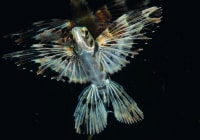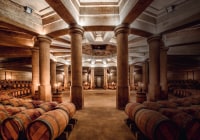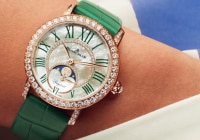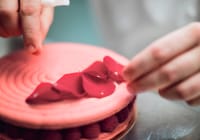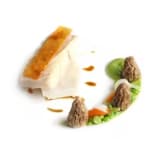
Search in Issues
Chapters
Chapter 10
L’Oustau de BAUMANIÈRE
Three Michelin stars and a nearly eight-decade history have made L’Oustau de Baumanière a celebrated address in Provence.
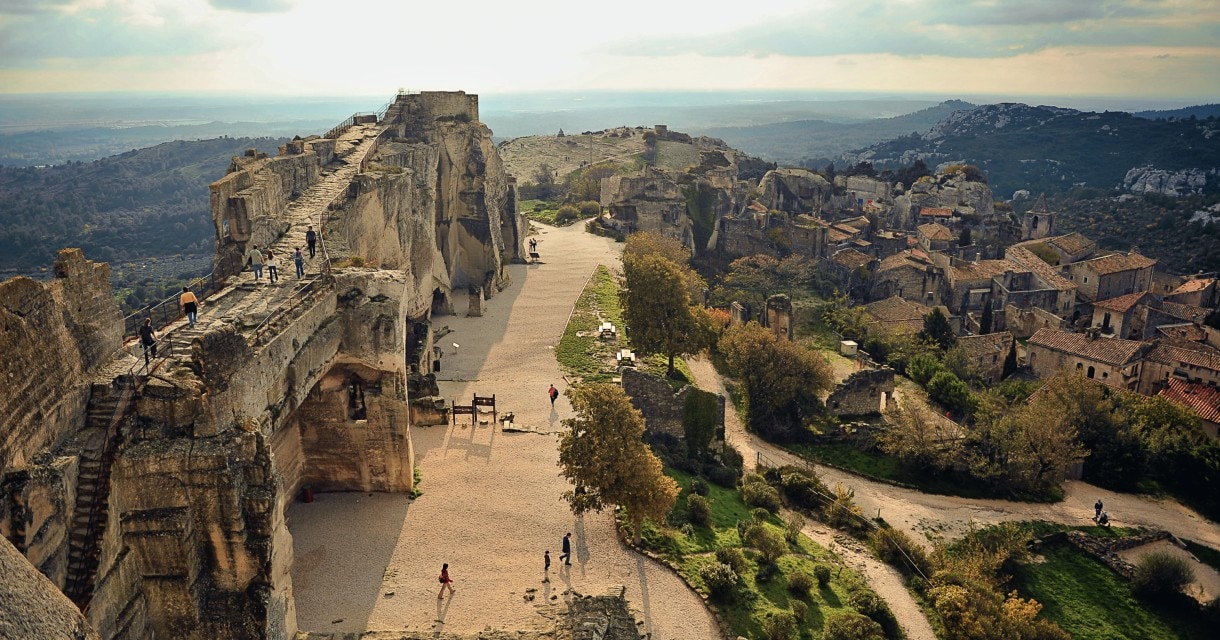
“Let me cook you an onion”. This is how Glenn Viel suggested he demonstrate his prowess and creativity to Jean-André Charial, then chef of L’Oustau de Baumanière. In the rarified world of grande cuisine, many times it is an omelet that becomes the test that a chef candidate must pass. But a simple onion? In fact, that onion was not “simple” after all.
Letting his imagination soar, Viel confected oignon, topinambour, purée de pain et truffe (onion, Jerusalem artichokes, bread puree and truffle). That “onion” must have been sensational, as the offer which followed opened the door for Glenn Viel to ascend to the Michelin-star heights as chef of one of the most storied and revered restaurants in all of France. In the nearly 77 years since its founding by Raymond Thuilier, there have been only two chefs of Baumanière prior to Glenn Viel: Thuilier, followed by his grandson Jean-André Charial.
There was one condition which Glenn Viel insisted upon before accepting Charial’s offer: that he be given free rein in the kitchen. Charial’s confidence in his new hire was validated immediately as the restaurant’s then two Michelin stars were retained in Glenn Viel’s first year. The rewards for Charial’s judgment rose even further when Viel in 2020 recaptured the coveted third Michelin star which had been lost since 1990. In one sense, Viel’s achievement was doubly impressive, as gaining that third star anointed him with the title of the youngest three-star chef in France.
Of all things, Viel did not set out to become a chef. Rather it was a career as a gendarme that initially beckoned. That detour did not last long. What followed over the next 15 years were posts at some of the most prestigious addresses in Paris (Le Meurice, followed by the Plaza Athénée). Later two polar opposites: the ski resort of Courchevel at two different Michelin-starred restaurants (for one of which, the Kilimandjaro, he obtained two Michelin stars), then a flip from the Alps to the seaside with the restaurant La Caravelle in Bonifacio.
Notwithstanding the freedom given in his charter, Viel did not transform the menu immediately. Instead, he devoted himself to perfection, retaining Charial’s celebrated traditions. Finding his footing, step by step, he began the evolution toward his own style.
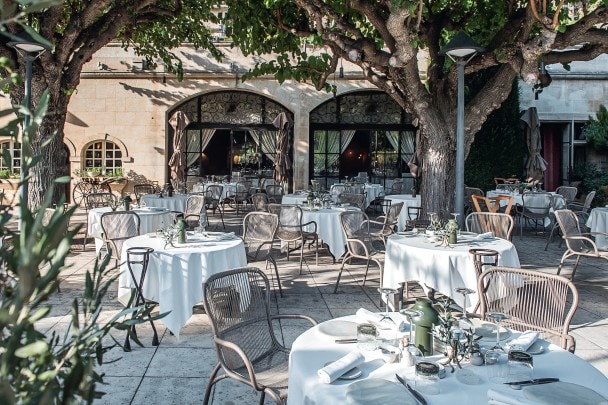

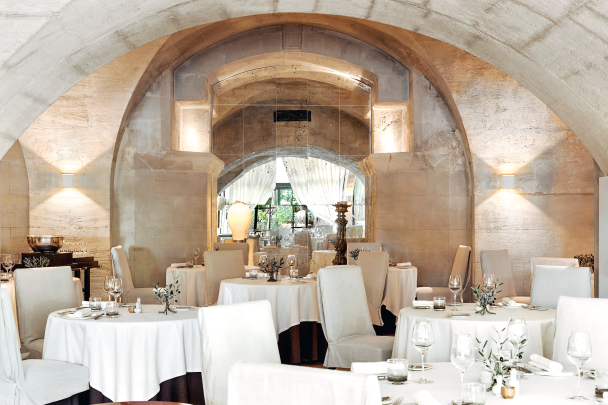
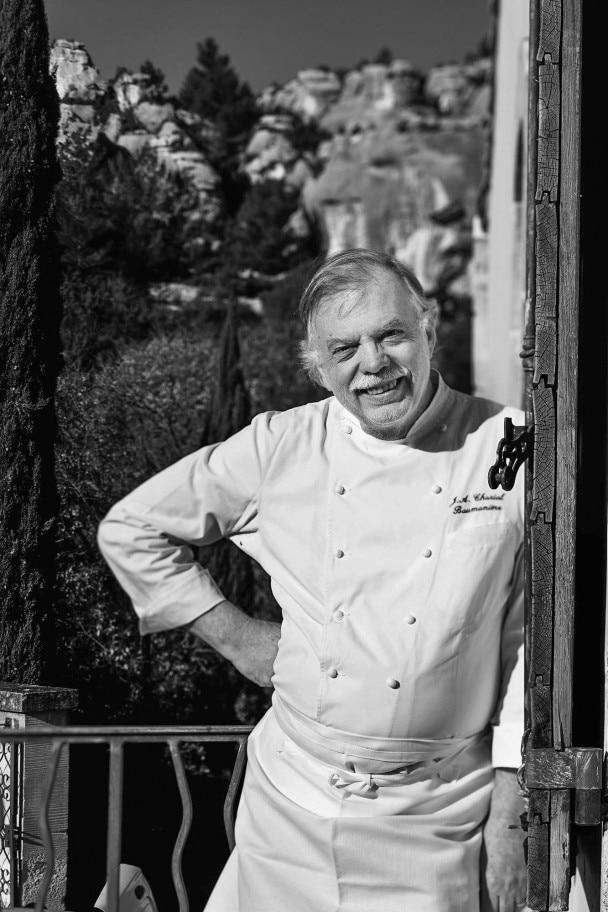
Chef Jean-André Charial.
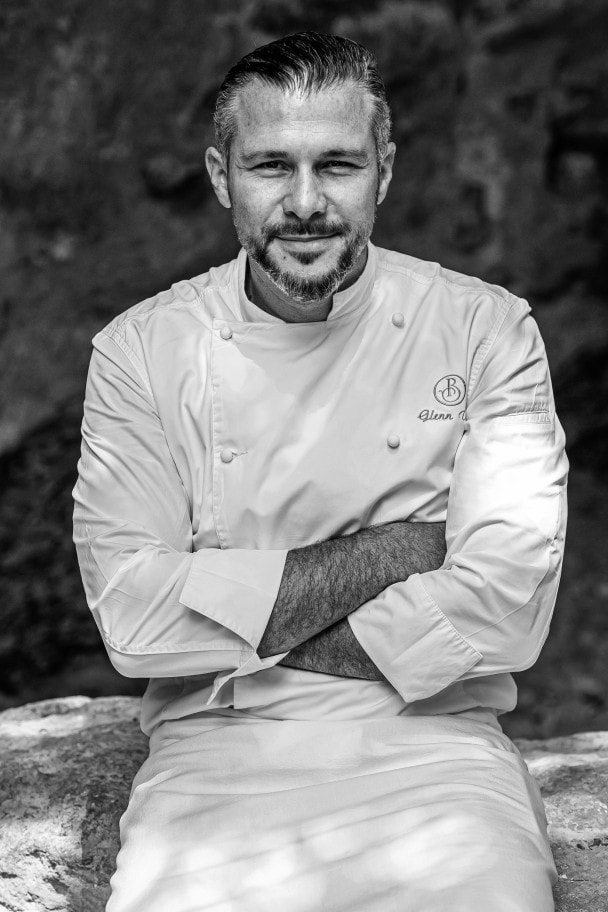
Chef Glenn Viel.
Of course, longstanding devotion to local products— examples: Costières pigeon, Baux valley olive oil—remained undiminished. He turned his imagination to focus upon a new approach to sauces and presentations. A defining glory of French cooking is the sauces. Glenn Viel’s sauces pay homage to this tradition with their extraordinary depth and concentration of flavor. Indeed, at the concentration he achieves, nuances, tones, and flavors emerge that are seldom seen elsewhere. A good example was his preparation of Escargots de St. Rémy de Provence “Réconfortant” (“comfortable” snails from the nearby village of St. Rémy). The description only offers a hint of the magic of Viel’s creation. Banish the thought of the great French classic of snails served in their shells with parsley garlic butter. As satisfying and emblematic as this tradition may be, Viel transports his snails to an entirely different plane. At the core of the dish is a hyper reduction of mushrooms delivering a flavor explosion and a distinctly meaty texture and personality akin to super concentrated veal stock. These notes elevate the “comfortable” snails, deepening and punctuating their own natural meaty character. As a touch of garlic should never be distant from a dish involving snails, Viel envelopes his preparation with a subtle garlic emulsion.
Two words capture additional overriding themes in Viel’s cooking: poetry and a touch of playfulness (the French word is ludique). A good example is the “Bœuf traceur d’un sandwich, “Souvenir”, pain sarrasin” (beef sandwich with buckwheat bread). What arrives is Simmental beef (Simmental is a Swiss breed of cattle that originated in the region of Bern), cooked rare, enveloped in lettuce. Where is the sandwich? Where is the bread, essential in any sandwich? Answer: in the sauce! The beef reduction sauce is partially thickened with buckwheat bread. The diner is left to discover the mystery.
Sometimes the humor is more obvious. When a potato gratin is prepared during truffle season, the truffle is poised on top, cut into the form of an eye. As the diner eyes the presentation, the “eye” of the gratin gazes back.
Another testament to Glenn Viel’s devotion to concentrated sauces and playfulness is Les couteaux, les pieds dans l’eau (razor clams with their “feet” in water). The razor clams are presented in their shells, tied together to form a cylinder. The “water” is in fact a reduction of clams with basil. Deep, rich and meaty, the sauce explodes with depths of flavor. To reach this level of concentration requires cooking the stock for a full 24 hours. Tweezers are presented with the dish in order to extract the razor clams from their shells. There is playfulness in the accompanying chips; both in form and color, they are meant to call to mind the environment of the clams, which, of course, is sand.

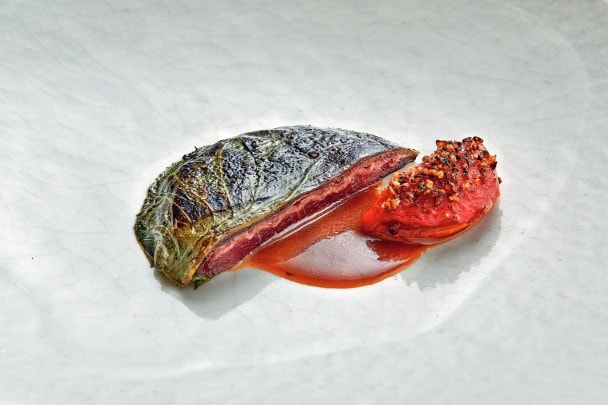
Bœuf traceur d’un sandwich, “Souvenir”, pain sarrasin.
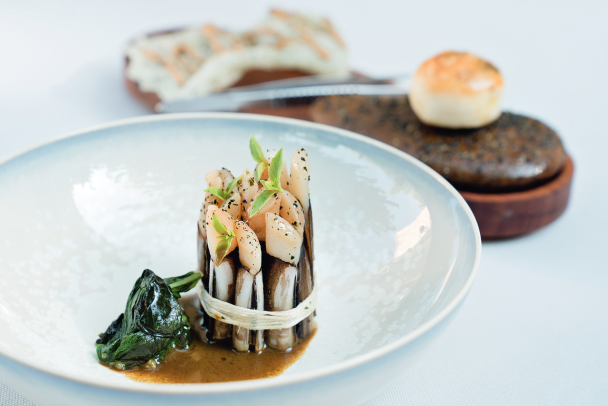
Les couteaux, les pieds dans l’eau.
Some of his inspiration originates from the grounds of Baumanière. The term “grounds” does not do full justice to what in many ways resembles a park. At one extreme end is the Baumanière restaurant and hotel. At the other is the more casual restaurant, La Cabro d’Or. In between are villas, fountains, lush gardens, topiaries, tranquil shaded areas ideal for relaxed reading, and special sections reserved for Viel. Of course, there is a vegetable and herb garden, soon to be expanded to cover two hectares, but also a chicken coop. Fortunately, the coop was never intended to supply the restaurant as its inhabitants were recently decimated by wild foxes. Also, for the amusement of the chef, there is an enclosure for raising pigs, who are nurtured in part by leftovers from the restaurant. Three-star gourmets indeed.
Although it is not unusual for grand restaurants found in the countryside to have vegetable/herb gardens, particularly in regions like Provence where the climate smiles upon them, the Baumanière “park” goes a step further with its own confiserie offering chocolate confections and a ceramic workshop, which not only fashions presentation plates for the restaurant— some with playful motifs, such as a snail with its trail behind—but also a broad selection for sale to visitors.
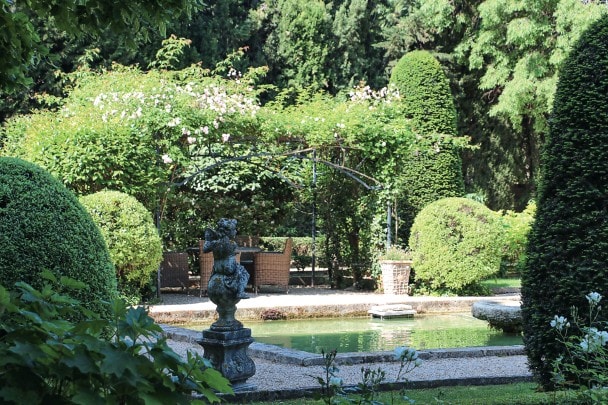
One of many tranquil corners within the gardens of Baumanière.

The herb and vegetable garden.
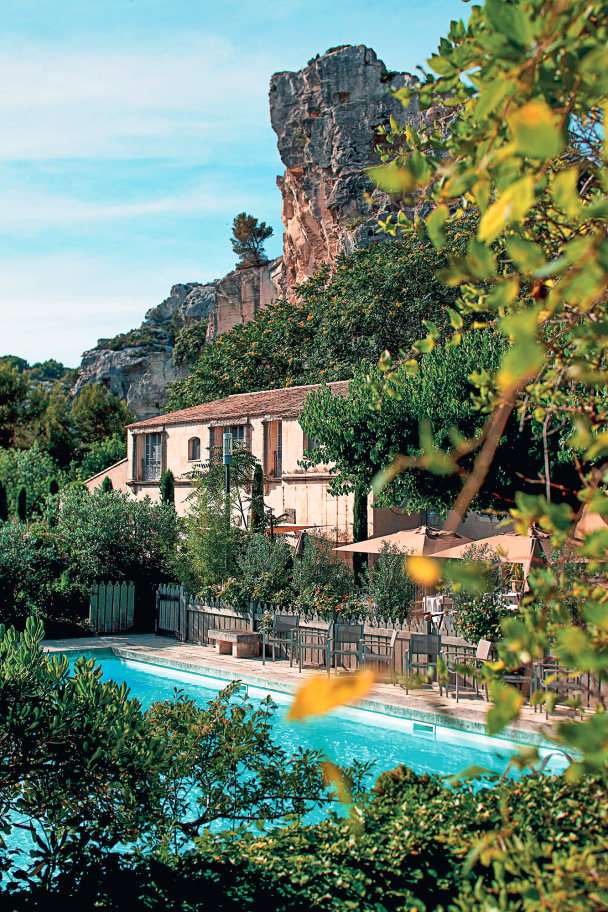

Chef Viel with a portion of the day’s harvest.
Poetry and playfulness may mark many of Viel’s creations, but he does bring one other element to some preparations, this one more serious: a patent. Going beyond his ultra reductions in building flavor, Viel has invented and actually patented something he terms “cailloux” (pebbles). He concentrates vegetable and shellfish stocks until they become solids. This enables him to use a fine rasp grater to punctuate a dish with the shavings, which replace the use of salt. Cailloux “seasoning” is used in some of his langoustine and vegetable preparations.
As his snail preparation shows, Viel delights in descriptions that point in one direction, but which yield surprises from another direction when the plate arrives. Take his ravioli. Raviole de calamars dans le ventre d’un “calalard”, émulsion lactée aux crustacés (calamari ravioli in the stomach of Colonnata lard with a shellfish emulsion). There is no pasta to be found in his “ravioli”. Instead, his ravioli is constructed with woven strips of calamari and Italian Colonnata. The interior offers smoked anchovy with a touch of seaweed. The emulsion placed alongside serves as the sauce.
More surprises abound with his Rouget, foie de rouget, sauce courgettes, “olives” mousse de foie de rouget (red snapper, snapper liver, zucchini sauce and “olive” snapper liver mousse). Rouget is a classic expression of Provence and the Mediterranean, particularly when accompanied by courgettes and olives. At the same time, rouget is a test of a kitchen’s prowess. Undercooked it is mushy. Overcooked, by even seconds, it becomes strong and fishy. Viel’s preparation was millimetrically spot on, sweet and dazzlingly fresh. Texture was brought to the rouget with a large rouget-infused chip. The “olives” served alongside were playful. Visually, they were perfect olive-shaped orbs but, in fact, they were a trompe l’oeil mousse of olives and rouget liver. Completing the presentation was a bread disk infused with a deeply concentrated rouget jus.
Texture was a theme with the Cèpes en strate “Tradition”, cremeux cèpes, which married cooked cèpes, strips of raw cèpes providing texture, and a thick emulsion of parmesan and verjus. All three of the components played off each other. Not only was the contrast of textures a centerpiece of the dish, but the emulsion amplified and deepened the mushroom essence.
Simplicity married with perfection was the watchword for Viel’s Carabineros au grill “Simplicité”, pulpe de fenouil à cru, feuilleté citron (Carabineros large shrimp, grilled and served with a fennel puree and a lemon-infused feuilleté). Carabineros are a rare giant shrimp found at great depths in the Mediterranean. They are prized for their extraordinary jumbo size and radiant red color. Perfectly grilled, leaving the sweet flesh translucent, the single shrimp was served with a wonderfully rich red reduction, prepared using the head, along-side a lemon-flavored feuilleté.
Innovation sparkles in Viel’s St. Pierre poché à l’eau de tomate “Simplicité”, ravioli de courgettes et romarin, pain aux algues, jus de pépins (John Dory simply poached in tomato water with a courgette and rosemary ravioli, seaweed bread and tomato seed juice). St. Pierre is a staple of French cooking; to shine, however, its delicate flesh always “needs” something to elevate it. For Viel, that “something” was poaching in tomato water, which delivered freshness, sweetness and acidity. Surprising was the tomato-based sauce, a reduction of tomato water including the seeds. The reduction from perfect tomatoes punctuated the natural sweetness and lightness of the water, the seeds bringing an intriguing texture. Served alongside on a separate dish was a single large ravioli in the form of a half-moon. With its own courgette- water-based sauce, the ravioli offered barely cooked courgettes infused with rosemary. The courgettes are used both for the exterior and filling of the ravioli. The bridges between the elements—tomato water, courgettes, rosemary—were perfect.
On a recent visit, it was the season of agneau de lait (milk-fed baby lamb). In this case the 12-week-old lamb was from Spain. Tradition dictates that knives be set for the course, but truly there was no need. The texture of the delicate lamb was ethereal.
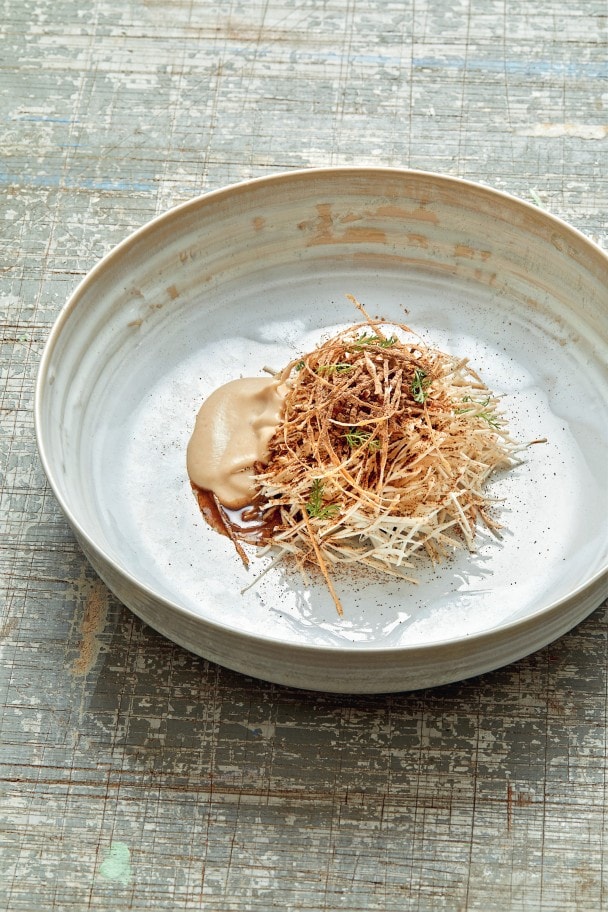
Cèpes en strate “Tradition”, cremeux cèpes.
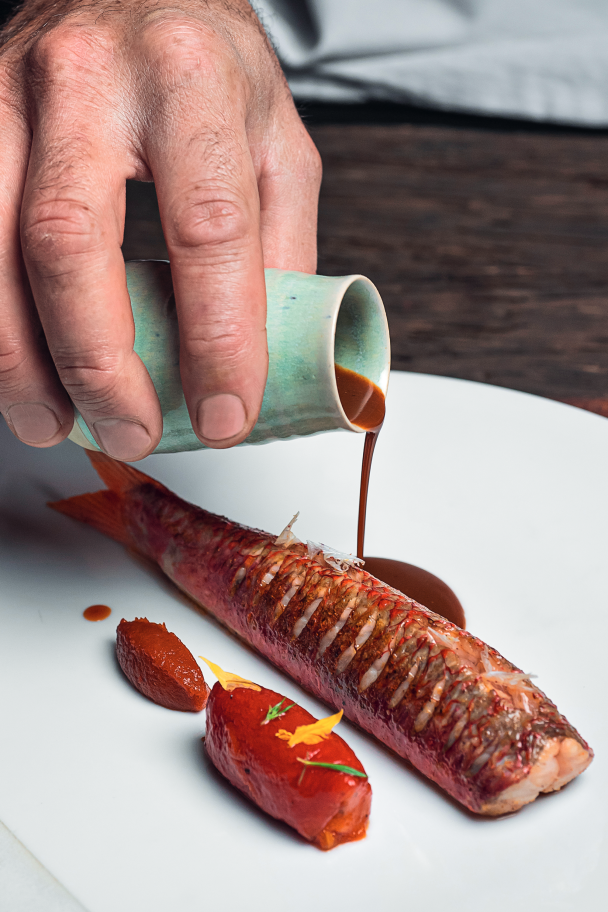
Rouget, foie de rouget.
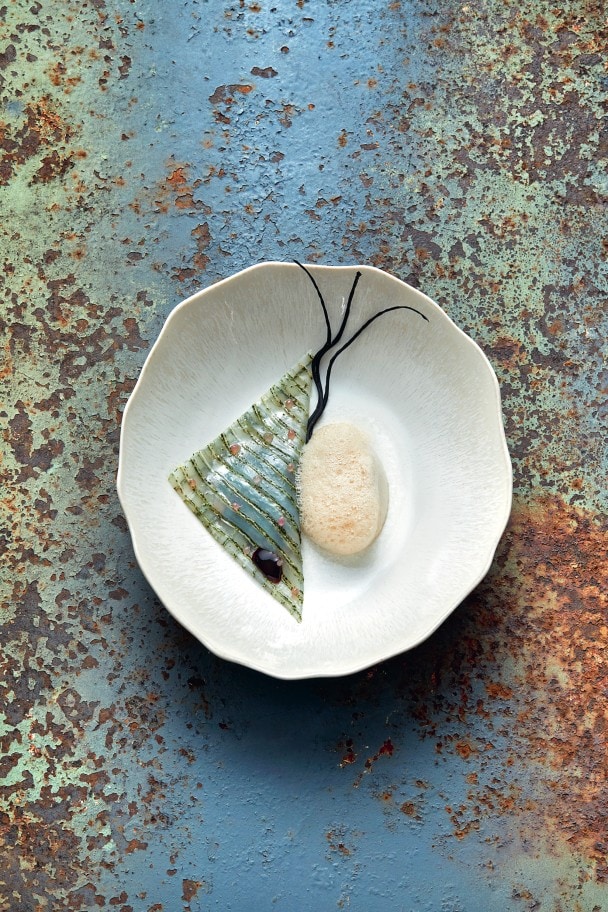
Raviole de calamars dans le ventre d’un “calalard”.
Chef Glenn Viel has shown that NEW IDEAS can find a place alongside a GRAND PATRIMONY.
Baumanière’s wine card is encyclopedic, covering all of the major French wine reg- ions. Fortunately, this included a broad range of Provençal wines which are not often found outside their home, including personal favorites, the wonderful offerings from Château Simone, both red and white. The mouth-filling 2020 blanc offering apricots, white peach, a rich texture, and a vanilla finish married perfectly with the fish courses.
The bookends of the meal—the parade of amuses-bouches at the beginning and desserts as the coda—are not to be over- looked. Of course, the amuses will vary greatly according to the season and choices presenting themselves in the market. One meal featured a tartare de langoustines au caviar (a tartar of langoustines with caviar) that dazzled with its showcase ingredients; tartare de veau avec chips d’anchois (tartar of veal nestled into an anchovy chip); sardine fumée (smoked sardine), the slightly sweet, thick morsel of sardine poised atop a pastry crust. The parade of these attention-grabbing introductions to the meal was done in honor of Viel’s friend and fellow Michelin-decorated chef Christophe Bacquié.
Tradition beckons for dessert. For more than half a century, legions of foodies have flocked to Baumanière with one dessert in mind: the emblematic Crêpes soufflées. In some ways, this grand classic brings together two desserts, a crêpe and a soufflé, with the crêpe enveloping the orange-scented soufflé.
To truly be a grand finale, the main dessert course should be surrounded by a cavalcade of small touches and Baumanière does not disappoint: a tartelette of rhubarb poised atop a small pitcher replete with a metal straw to access a rhubarb-cucumber drink within the pitcher; a lemon and honey yogurt tart showcasing Viel’s playfulness. Underneath the tart sits a miniature pewter pail recalling a milk pail, the tart decorated with a chocolate image of a cow’s head. The final touch: chocolate nougat bark.
Over its eight-decade history, which includes its selection for the prestigious Relais & Châteaux guide dating back to its very first edition in 1954, Baumanière has earned the mantle of a mythic address in Provence. Glenn Viel has shown that new ideas can find a place alongside a grand patrimony.
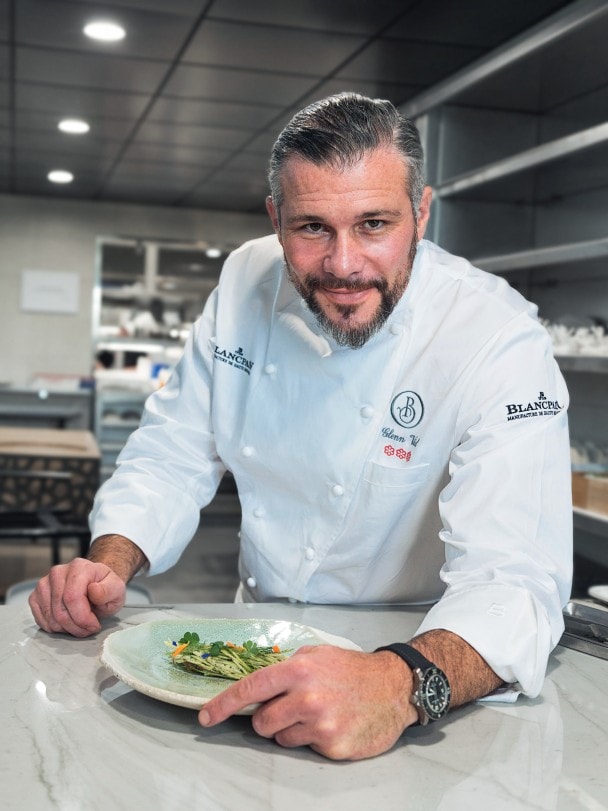
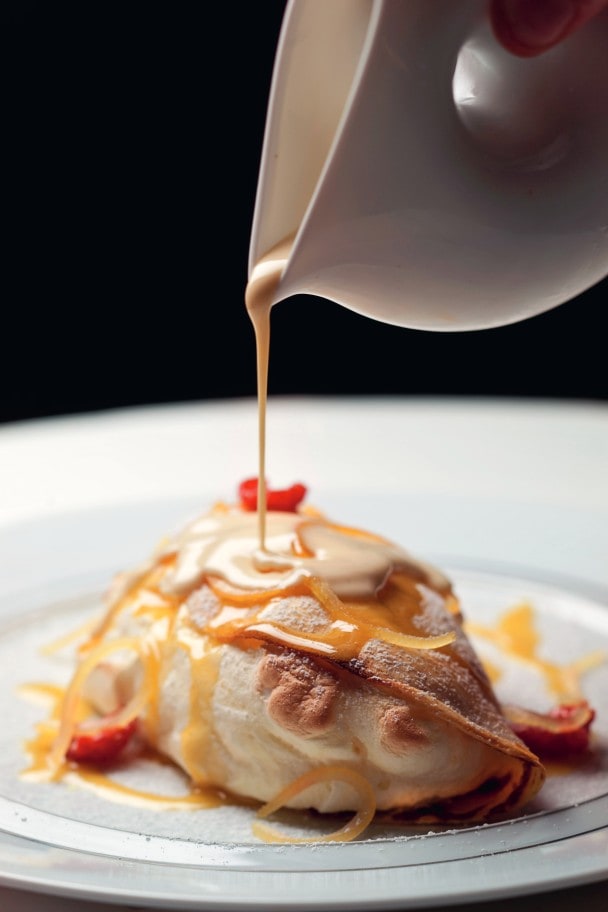
Crêpes soufflées.
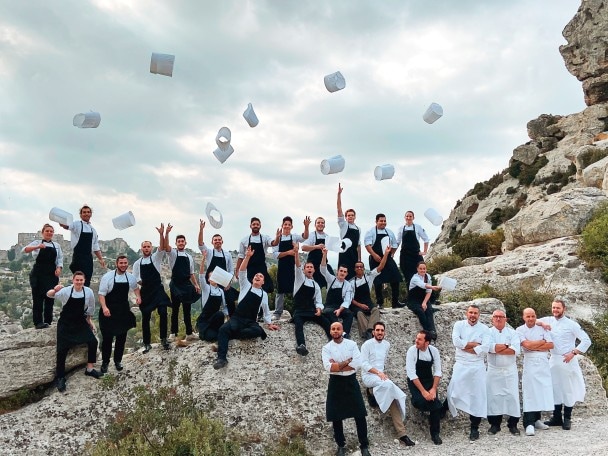
PUBLISHER EDITORIAL COMMITTEE PROJECT MANAGEMENT EDITORS IN CHIEF CONTRIBUTORS TO THIS ISSUE TRANSLATION PROOFREADING | GRAPHIC DESIGN. LAYOUT ART DIRECTION PHOTOLITHOGRAPHY PREPRESS, PRINTING WATCH PHOTOGRAPHY OTHER PHOTOGRAPHY, ILLUSTRATIONS Release date: September 2023 |
Other issues
Don't miss the latest issue
Sign Up for New Releases





